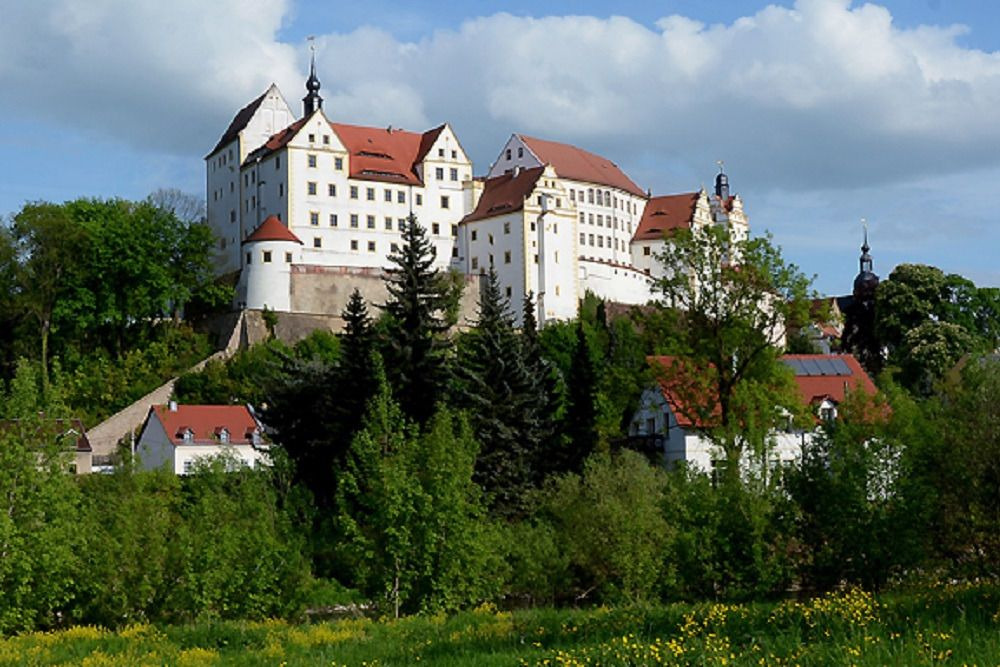Fowler, Hedley Nevile "Bill"
- Date of birth:
- June 8th, 1916 (London, United Kingdom)
- Date of death:
- March 26th, 1944 (Dorset, United Kingdom)
- Buried on:
- Commonwealth War Graves Durrington Cemetery
- Service number:
- 39457
- Nationality:
- British
Biography
Squadron Leader Hedley Fowler escaped from Oflag IV-C and was decorated for it. He died during a test flight over England testing a new Hawker Typhoon.
Do you have more information about this person? Inform us!
- Period:
- Second World War (1939-1945)
- Rank:
- Squadron Leader
- Unit:
- No. 615 (County of Surrey) Squadron, Royal Air Force
- Awarded on:
- December 14th, 1943
'On 15 May 1940, I was pilot of a Hurricane which took-off about 1100 hours from Vitry-en-Artois, escorting bombers over Dinant. At approximately 1145 hours I was shot down by Messerschmitt fighters about five miles north of Fumay, on the west bank of the River Meuse. My aircraft was on fire so I baled out and landed in a wood. I left my parachute in the middle of a bush and cut one of the panels out to bind round my head, which was bleeding. I had dropped my helmet on the way down and I was not wearing flying kit. My clothes were standard dress uniform, a khaki 'sidcot suit', and black flying boots. After landing I destroyed my pay book and personal letters, but kept my identity disc and a B.E.F. identity card. I threw away my pistol, which was of German make. I then started to walk west through thick woods. My aircraft had fallen in the forest on the east bank of the River Meuse. I walked for about five hours. Going was very rough and I took off my Sidcot suit and carried it. About 1700 hours I was resting by a tree when a French soldier jumped out of a bush and pointed a rifle at me. I speak a little French and he asked me whether I was a German. I showed him my B.E.F. identity card and convinced him that I was a British pilot. This Frenchman was one of six French sappers trying to rejoin their unit. With them I walked through woods to Focroi. Here I left them and joined the remnants of a company of French infantry, commanded by a Sub. Lieutenant. They were much disorganised, and were retreating west. Their M.O. attended to the cut on my head. The next day, 16 May, we passed through Rumigny. About 1630 hrs we were nearing Brunehamel when we were fired upon by a M.G. We got off the road and split up into two sections. I went with the Sub-Lieutenant. We moved into an isolated house where we stayed for about an hour. We were fired upon and returned the fire till our ammunition ran short. Two German tanks then appeared and we were surrounded. We therefore surrendered.'
After capture Fowler was moved to a series of different locations and questioned only briefly finally arriving at Stalag Luft I (Barth) on 5 July. It was here while performing the duties of camp Parcels Officer that he made a solo escape by impersonating a German soldier. After two days on the run he was eventually arrested at Bergen by a German policeman and his dog because he could not produce his identity card and then it was discovered that he was an escapee.
He was then sent to Oflag IV C (Colditz) at the end of November 1941 and arrived there on 1 December 1941.
On September 9 1942 he escaped by tunnel with five other men. Slipping with four others through a guard office and a storeroom dressed as German officers and Polish orderlies, they managed to make it out of the Castle. The others were unfortunately recaptured and only van owler and a Dutch Officer,Damiaen Joan van Doorninck reached Switzerland.
Fowler reached Gibraltar in March 1943, was flown home to Hendon and 'debriefed' by M.I.9 and was recommended for an award of the Military Cross for his escape.
His recommendation for the Military Cross reads: 'This officer showed much skill and courage in his efforts to escape. Even though recaptured after the first attempt, this did not deter him from making a second, and this time a successful effort. This escape was from a camp specially reserved for officers who have either attempted to escape, or have otherwise given trouble to the Germans. The initiative and daring he displayed merits recognition and I strongly approve the War Office suggestion that he be awarded the M.C.'
- Period:
- Second World War (1939-1945)
- Period:
- Second World War (1939-1945)
- Period:
- Second World War (1939-1945)
- Period:
- Second World War (1939-1945)
Sources
- Photo: Imperial War Museum
- - https://www.thegazette.co.uk/London/issue/36285/supplement/5438
- 'The Diggers of Colditz' by Jack Champ, page 131
- Noble Numismatics - Valuations & Auctions - Coins, Medals & Banknotes









